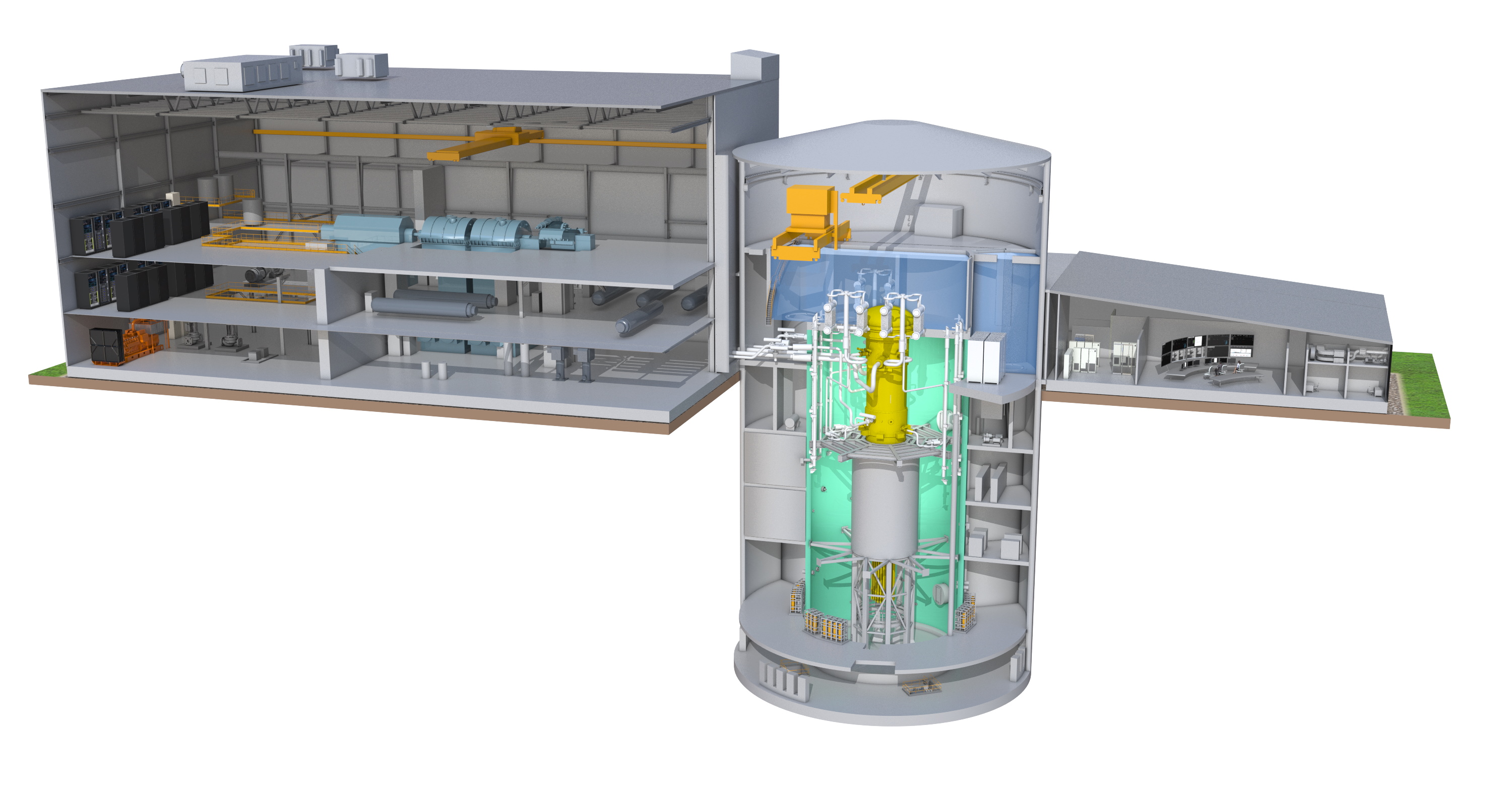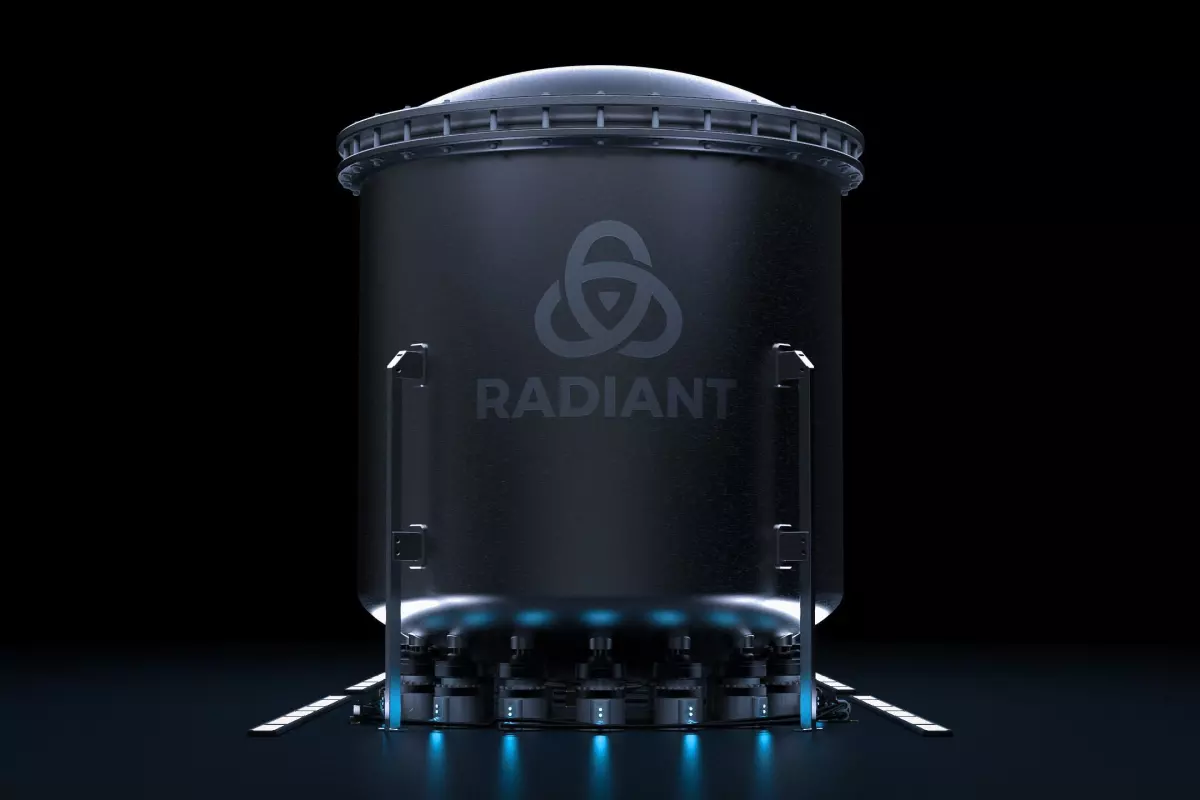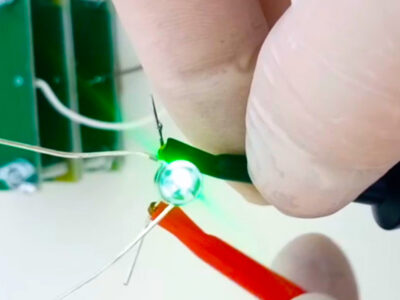Although nuclear energy is reliable, powerful, and a clean energy source, it’s still not considered the go-to solution in the big energy transition we’re experiencing right now. Solar, wind, and hydro are getting all the attention. Nuclear reactors are big, expensive, and take a long time to build, even longer to get permitted and there’s also the nuclear perception issue to overcome. What if we could make them smaller, portable, cheaper, and safer. Small modular reactors are getting a lot of interest with the first versions coming online in China and new locations popping up in Canada. As well as ex-Space X engineers that have made things even smaller … to a micro reactor scale. Could this be the future of nuclear energy?
In December 2020, I published a video exploring one of the rising stars of modern nuclear technology, small modular reactors (SMRs). At that time, we still hadn’t seen any SMR-based power plants in commercial operation. Several projects were being developed around the globe, but have been running into roadblocks. The Oregon-based NuScale, which has spent millions in SMR development, is facing regulatory issues in their project involving a 12-module, 540 MW power plant.1 2 3 Since my previous video, there have been several updates and new projects that are worth touching on, like the Chinese SMR demonstration project I explored in 2020. At the time it hadn’t gotten off the drawing board, but the project finally kicked off construction in July 2021. Ex-Space X engineers have also been making some news, but first let’s quickly review what SMRs are and why so many people keep pushing for nuclear as the solution to our energy problems. I see it all the time in my video comments.
But What Are SMRs?
SMRs operate based on nuclear fission, just like traditional nuclear reactors, where neutrons split atoms releasing energy. As the atoms split into smaller atoms, a few extra neutrons are released, which in turn split more atoms feeding the chain reaction and maintaining this cycle.
There are basically two designs of SMRs: thermal-neutron reactors and fast-neutron reactors. The difference between the two is the same as traditional nuclear reactors, which (you might have guessed by the word “fast” in the name) is the speed of the neutrons’ flow. Neutrons of thermal-neutron reactors move at a speed of 2.2km/s and contain an energy amount equal to 0.025eV, where eV means electronvolts, which is the kinetic energy gained by a single electron speeding up through a potential difference of one volt in vacuum. On the speedier side, fast-neutron reactors operate with a neutron flow at speeds around 50,000km/s and an energy amount in the MeV scale — where MeV stands for megaelectronvolt, That’s 1 million electron volts, so yeah … it’s got a bit more punch. Fast-neutron reactors utilize liquid metal for cooling and don’t require a moderator; thermal reactors usually use water for cooling and do need a moderator. However, what really sets SMRs apart from traditional nuclear reactors is (again, it’s right in their name) their smaller size and power capacity. While conventional reactors are huge, built on-site, and can produce up to gigawatts of power, SMRs are much smaller, generate less than 300MW, and can be built off-site. 4 5 6
The enormous size of conventional reactors makes the construction of nuclear power plants complex and slow, taking about 6 years to be completed, which also results in higher costs. 7 SMRs can be built much faster, requiring less staff for location assembly, maintenance, and operation. Their modularity, smaller size, and the possibility of in-factory construction opens up opportunities for the installation of multiple units on the same site, as well as simpler component transportation and standardizing manufacturing. 8 When you can commoditize manufacturing, the prices will drop.

When it comes to safety, manufactured SMRs include the latest safety features and security requirements. SMRs have smaller cores, which opens up space for the integration of more components into a single vessel, like the nuclear steam supply system. Their modular design results in simplified and safer systems, implying reduced severe failure modes, shielding requirements and reduced offsite emergency planning zones. NuScale’s SMR, for example, can passively cool itself utilizing natural water circulation without needing additional coolant or power supply. On top of that, its design is immersed in water to assist in cooling the reactor during unusual conditions, not to mention the specific valves that instantly release heat from the reactor vessel during an emergency. 9 10
Latest News
That all sounds great, but what about putting that into practice? Well, there’s been some interesting developments recently.
At the end of 2021, the world’s first commercial onshore SMR was started up in China after nine years. The 200MW unit 1 reactor manufactured by China Huaneng Group Corporation (CNNC) was connected to the grid in northeast China’s Shandong province. This is the world’s first pebble-bed modular high-temperature reactor cooled with helium gas, instead of liquid water. Using a gas as the reactor coolant allows the core to heat up to about 1800ºF, which can’t be achieved using water. Helium is extremely stable and non-flammable, so it’s a great coolant. 11 12 13
.jpg)
The company already has a second unit scheduled for 2023, but the project’s cost hasn’t been disclosed. According to Tsinghua University research, the commercialization process should cut the cost of each reactor by roughly 60%.14
Just this past December, GE Hitachi Nuclear Energy (GEH) and Ontario Power Generation (OPG) in Canada, are working on the new Darlington nuclear site. The plan is to use a BWRX-300 SMR for the project, which uses passive safety features and is cooled by natural water circulation. OPG had also considered Terrestrial Energy’s Integrated Molten Salt Reactor and X-Xe-100 energy’s high-temperature gas-cooled reactor. 15 The BWRX-300, a name that rolls right off the tongue, is projected to have up to 60% less capital cost per MW when compared with a typical water-cooled SMR. In addition, it can be built in 2 to 3 years when combining its modularity with the use of open-top building techniques, which results in a 90% volume reduction in plant layout.16 The open-top technique is pretty much what it sounds like; the walls of the containment facility are built out first, but the top is left open. This makes it easier to use large capacity cranes to lower the components in from the top.17
According to a study developed by the Conference Board of Canada, a 300 MWe grid-scale SMR could result in thousands of direct and indirect jobs from project development all the way through decommissioning after 60 years of operation. In addition, a report from PwC Canada estimates that the project could generate CAD1.9 billion (USD1.49 billion) in labor income, more than CAD750 million (USD588 million) in federal, provincial and municipal tax revenue, and CAD2.3 billion (USD1.8 billion) in gross domestic product (GDP) over its lifespan. The project is expected to be completed as early as 2028. 15
Comparatively, a report made by Hatch Ltd. showed that by using Terrestrial energy IMSR400 power plant, which is composed of two integral molten salt reactors and generators that could deliver 390MW of power, could generate nearly CAD6.6 billion (USD5.19 billion) of GDP for Ontario and CAD7.9 billion (USD6.22 billion) of GDP during its lifespan. However, the design and construction of their model would take 9 years. 18

While these are small, what about going even smaller? Another alternative to conventional nuclear power plants that’s been gaining attention recently is microreactors. This compact type of reactor can generate from 1MW to 20MW, being able to operate either connected to or islanded from the grid, or as part of a microgrid. They’re 100-1,000x smaller than a traditional nuclear reactor, and have power rates from 10-100x times lower than an SMR. If SMRs can be easily transported by trucks and ships to their final destination, imagine what this technology can bring to the table.
Microreactors can be easily integrated with renewables in microgrids, used to restore power cuts from natural disasters, and can be simply moved from one site to another. In addition, when compared to current commercial reactors, microreactors use low-enriched uranium with uranium-235 in higher concentration. These reactors run for up to 10 years without refueling and, due to extremely small reactor volume, they are safer to operate. 19 20
In the US, former Space-X engineers have launched the startup Radiant. They’re developing a micro nuclear reactor rated at 1MW that could provide power for 1,000 homes without needing an external water supply. The micro reactor uses helium for cooling and has remote monitoring & maintenance functions, which reduces the risks of damage.

Radiant has received $1.2 million from private investment. However, the technology is patent-pending, so there isn’t much technical information and specifications available to the public yet. 21 22 23
But What’s Holding it Back?
So as exciting as all of that is … what’s holding it back? Why not just “go nuclear.” The main challenges surrounding the SMR market are related to complicated licensing and regulatory guides, codes and standards of practice, and legal frameworks around the globe. But beyond the regulatory challenges, there’s also the cost.
While conventional nuclear power has a Levelized Cost of Electricity, or LCOE ranging from $131/MWh to 204/MWh according to Lazard’s Levelized Cost of Energy Analysis—Version 15.0, SMRs have an LCOE of $120/MWh for a typical market in the U.S, Europe, or Japan. This figure is lower than traditional reactors but still much higher than the LCOE for Thorium reactors, which reach $53.51/MWh with a 30-year lifespan. On the flip side, the ability to incrementally add modules to an installation reduces both upfront investment and capital risk of SMRs compared to other nuclear technologies. 24 25 26 However, compared to solar, wind, and hydro, you’re looking at something in the range of $26 to $50/MWh. Even wholesale solar + battery systems are in the range of $85-$158/MWh, so nuclear isn’t a slam dunk there either.27
Finally, the biggest issue with nuclear power is how to dispose of waste. What do we do with the radioactive waste from nuclear power plants, which can be extremely dangerous for thousands of years? Just here in the US, for example, 90,000 metric tons of nuclear waste is waiting to be permanently disposed of, but there aren’t any permanent geological repositories in operation yet. In the meantime, the containers storing all of that radioactive material degrade.
A more permanent solution proposed by scientists is to vitrify nuclear waste so that the mixture provides some shielding against radioactive leakage. However, this process is complex and still has uncertainties. This is where Thorium reactors can contribute to nuclear waste storage. As I explored in my video revisiting Thorium reactors, their waste is radioactive for about 500 years, while the waste from conventional nuclear reactors is still radioactive for thousands of years. 28 29 30
Not to sound like I’m banging the “nuclear is scary” drum too much, it’s an extremely safe power source. When we look at safety data from power sources, nuclear power has considerably lower death rates from energy production per TWh when compared to other power sources. While nuclear power has a death rate from accidents of 0.07/TWh, widely used energy sources like coal and oil have 24.62/TWh and 18.64, respectively, which is yet another reason we have to move beyond them quickly.31
Although SMRs and microreactors can address several problems of conventional reactors, and the SMR market is expected to grow at a CAGR of 15.8% until 2030, there are still many challenges to overcome.32 There’s been some good progress over the past couple of years, and some exciting ones on the horizon, but whether SMRs and microreactors will be the mainstream technologies for nuclear power isn’t a sure thing.
- Smaller, safer, cheaper: One company aims to reinvent the nuclear reactor and save a warming planet↩
- Small Nuclear Power Reactors↩
- WHAT IS A SMALL MODULAR REACTOR (SMR)? (A COMPLETE GUIDE)↩
- So, What Exactly Are Small Modular Nuclear Reactors?↩
- Difference Between Thermal Reactor and Fast Reactor↩
- Economics of Nuclear Reactor↩
- Benefits of Small Modular Reactors (SMRs)↩
- What Should I Do if a Small Modular Reactor Loses Off-Site Power?↩
- Small Modular Reactors: Challenges and Opportunities↩
- China Powers Up the World’s First Commercial Onshore Small Modular Nuclear Reactor↩
- Grid connection for unit 1 of China’s HTR-PM project↩
- China’s HTR-PM reactor achieves first criticality ↩
- The Status of HTR-PM, a 200MWe High Temperature Gas-cooled Reactor demonstration plant constructed in China↩
- Open Top Method: Advanced Construction Technology for Nuclear Power Plants↩
- Lazard’s Levelized Cost of Energy Analysis—Version 15.0↩
- Small modular nuclear reactors could be key to meeting Paris Agreement targets↩
- Safe, clean, proliferation resistant and cost-effective Thorium-based Molten Salt Reactors for sustainable development↩
- OPG chooses BWRX-300 SMR for Darlington new build↩↩
- Microreactors↩
- What is a Nuclear Microreactor?↩
- Levelized Costs of New Generation Resources in the Annual Energy Outlook 2021↩
- As nuclear waste piles up, scientists seek the best long-term storage solutions↩
- The real challenges to nuclear are external, says panel↩
- The Thing About Thorium: Why The Better Nuclear Fuel May Not Get A Chance↩
- Small Modular Reactor Market↩
- Canada / Darlington SMR Should Be Domestic Generation IV Plant, Says Report↩
- Radiant↩
- Ex-SpaceX Engineers Are Developing A Mini Nuclear Reactor↩
- Radiant aims to replace diesel generators with small nuclear reactors↩
- CNNC’s ACP100 SMR-Technique Features and Progress in China↩
- THE BWRX-300 SMALL MODULAR REACTOR↩
- What are the safest and cleanest sources of energy?↩















Comments